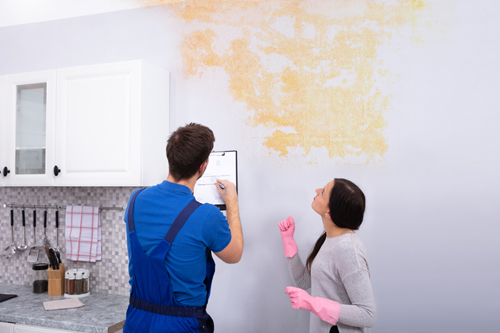Do's & Don'ts of Water Restoration.
Do's & Don'ts of Water Restoration.
Blog Article
The content listed below on the subject of Ways to Reduce The Risk Of Fire And Water Damage is rather motivating. Give it a try and draw your own findings.

Though water gives life, water invasion on components where it's not intended to be can cause damages. It can peel off away surfaces and erode the foundation if the water soaks right into your framework. Mold and mildew and also mold additionally grow in a wet setting, which can be hazardous for your health. Houses with water damage smell moldy and old.
Water can originate from many resources such as hurricanes, floodings, burst pipes, leaks, and sewer concerns. In case you experience water damages, it would certainly be great to know some safety preventative measures. Here are a couple of standards on just how to handle water damages.
Do Prioritize Home Insurance Policy Insurance Coverage
Water damages from flooding because of heavy winds is seasonal. Nevertheless, you can additionally experience an abrupt flood when a malfunctioning pipe instantly bursts right into your home. It would certainly be best to have residence insurance policy that covers both acts of God such as all-natural calamities, and emergencies like damaged plumbing.
Do Not Neglect to Shut Off Utilities
This reduces off power to your whole residence, preventing electric shocks when water comes in as it is a conductor. Don't neglect to turn off the major water line shutoff.
Do Remain Proactive and Heed Weather Informs
Storm floods can be really unpredictable. Stay ready and also proactive if there is a history of flooding in your area. If you live near a lake, creek, or river , pay attention to emptying warnings. Take out valuables from the first stage and also basement, after that put them on the highest feasible level. Doing so lowers prospective residential property damages.
Do Not Ignore the Roof
You can stay clear of rain damage if there are no holes and leaks in your roof covering. This will protect against water from flowing down your walls and saturating your ceiling.
Do Take Note Of Little Leaks
A burst pipeline does not take place over night. You might see gurgling paint, peeling off wallpaper, water streaks, water spots, or trickling sounds behind the walls. Have your plumbing fixed prior to it results in massive damage.
Do Not Panic in Case of a Burst Pipeline
When it comes to water damage, timing is vital. Thus, if a pipe bursts in your house, quickly shut off your primary water valve to reduce off the resource. Call a respectable water damages restoration professional for aid.
Water gives life, water breach on components where it's not expected to be can result in damage. Residences with water damages odor old and musty.
Water damages from flooding dues to heavy winds is seasonal. You might discover bubbling paint, peeling off wallpaper, water streaks, water stains, or dripping sounds behind the walls. When it comes to water damage, timing is vital.
Some Do's & Don't When Dealing with a Water Damage
DO:
Make sure the water source has been eliminated. Contact a plumber if needed. Turn off circuit breakers supplying electricity to wet areas and unplug any electronics that are on wet carpet or surfaces Remove small furniture items Remove as much excess water as possible by mopping or blotting; Use WHITE towels to blot wet carpeting Wipe water from wooden furniture after removing anything on it Remove and prop up wet upholstery cushions for even drying (check for any bleeding) Pin up curtains or furniture skirts if needed Place aluminum foil, saucers or wood blocks between furniture legs and wet carpet Turn on air conditioning for maximum drying in winter and open windows in the summer Open any drawers and cabinets affected for complete drying but do not force them open Remove any valuable art objects or paintings to a safe, dry place Open any suitcases or luggage that may have been affected to dry, preferably in sunlight Hang any fur or leather goods to dry at room temperature Punch small holes in sagging ceilings to relieve trapped water (don't forget to place pans beneath!); however, if the ceiling is sagging extremely low, stay out of the room and we'll take care of it DO NOT:
Leave wet fabrics in place; dry them as soon as possible Leave books, magazines or any other colored items on wet carpets or floor Use your household vacuum to remove water Use TV's or other electronics/appliances while standing on wet carpets or floors; especially not on wet concrete floors Turn on ceiling fixtures if the ceiling is wet Turn your heat up, unless instructed otherwise

Do you enjoy reading about Fire And Water Damage Prevention? Put a remark further down. We will be pleased to hear your suggestions about this article. We are looking forward that you come back again soon. Sharing is nice. Helping people is fun. Thank you so much for going through it.
Report this page